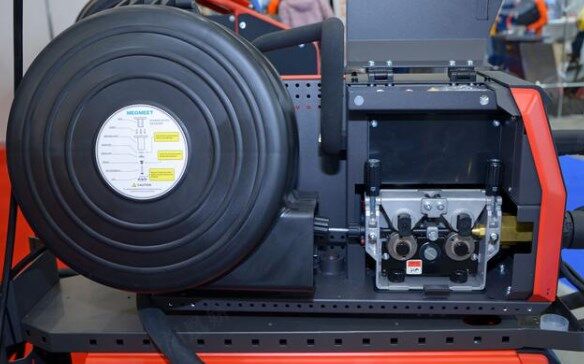Welding systems are crucial in many industries, from manufacturing to construction. These systems include components like welding machines, torches, and consumables. Over time, these parts can deteriorate. Aging equipment can lead to reduced performance, increased maintenance costs, and potential safety risks. This article provides essential tips and strategies to combat aging in welding systems, ensuring longevity, efficiency, and safety.

I. What's Welding System Aging?
Welding systems are complex. They include machinery and parts that work under intense conditions. Each part has a lifespan influenced by usage, environment, and maintenance. For example, welding machines can last several years. Consumables like electrodes need frequent replacement due to wear and tear.
II. Signs of Aging in Welding Systems
Recognizing the signs of aging is crucial. Common symptoms include:
Reduced welding quality
Erratic operation
Unusual noises
Leaks
Visible wear like rust or corrosion
Ignoring these signs can lead to equipment failure, costly repairs, and compromised safety. Regular inspections and diagnostics are essential.
III. Preventive Maintenance Techniques
Preventive maintenance extends the lifespan of welding systems. Establish a regular maintenance schedule to detect and address issues early. Key tasks include:
Cleaning components to remove debris and contaminants
Lubricating moving parts to reduce friction
Calibrating equipment for accuracy
Implement predictive maintenance techniques like vibration analysis and thermal imaging to identify potential failures before they escalate.
IV. Extending Lifespan through Proper Usage
Proper usage practices impact equipment longevity. Operators should receive comprehensive training. This includes:
Understanding optimal settings for different welding processes
Maintaining a steady workflow to prevent overheating
Adhering to recommended duty cycles
Regularly inspect consumables and replace them as needed to ensure consistent performance and reduce strain on the system.
V. Environmental Considerations
Environmental conditions affect welding system aging. High humidity, extreme temperatures, dust, and corrosive chemicals can hasten deterioration. Protective measures include:
Storing equipment in climate-controlled environments
Using covers during downtime
Regular inspections can detect and address potential environmental damage early, prolonging equipment lifespan.
VI. Upgrading and Retrofitting Options
Sometimes, upgrading or retrofitting is more cost-effective than repairing aging equipment. Modern welding technology offers enhanced efficiency, reliability, and safety features. Upgrading to newer models or retrofitting existing equipment with advanced components can improve performance and extend lifespan.
VII. Troubleshooting Common Issues
Dealing with aging equipment involves identifying and addressing common issues to extend its lifespan and ensure it operates efficiently. Here are some common problems and their potential solutions:
1. Wear and Tear
Issue: Components deteriorate due to regular use.
Solutions:
Regularly inspect and replace worn-out parts.
Implement a preventive maintenance schedule.
Use high-quality replacement parts.
2. Obsolescence
Issue: Equipment becomes outdated and incompatible with newer systems.
Solutions:
Retrofit older equipment with modern components.
Upgrade software and firmware where possible.
Consider gradual replacement with newer models.
3. Decreased Efficiency
Issue: Aging equipment may operate less efficiently, consuming more power or taking longer to perform tasks.
Solutions:
Perform routine maintenance and calibration.
Clean internal and external parts to remove dust and debris.
Lubricate moving parts to reduce friction.
4. Frequent Breakdowns
Issue: Older equipment tends to break down more often, leading to increased downtime.
Solutions:
Keep a log of breakdowns to identify patterns and problematic components.
Maintain a stock of critical spare parts.
Train staff on quick fixes and troubleshooting techniques.
5. Difficulty Finding Replacement Parts
Issue: As equipment ages, finding parts can become challenging.
Solutions:
Develop relationships with multiple suppliers.
Consider using third-party or refurbished parts.
Look into custom manufacturing for critical components.
6. Outdated Safety Features
Issue: Older equipment may lack modern safety features, posing risks to operators.
Solutions:
Retrofit equipment with new safety features like guards, sensors, and emergency stops.
Conduct regular safety audits.
Provide thorough training on safe operation practices.
7. Data Inaccuracy
Issue: Aging equipment might produce inaccurate data or measurements.
Solutions:
Regularly calibrate measurement instruments.
Cross-check data with newer equipment.
Replace or repair faulty sensors and components.
8. Higher Operating Costs
Issue: Increased maintenance, energy consumption, and downtime lead to higher operating costs.
Solutions:
Conduct a cost-benefit analysis to determine when it's more economical to replace rather than repair.
Optimize usage to minimize energy consumption.
Implement energy-efficient upgrades where possible.
9. Software and Firmware Issues
Issue: Outdated software and firmware can lead to compatibility and security issues.
Solutions:
Regularly update software and firmware.
Replace equipment that can no longer be updated.
Use virtual machines or emulators to maintain compatibility.
10. Corrosion and Environmental Damage
Issue: Exposure to harsh environments can lead to corrosion and other damage.
Solutions:
Use protective coatings and covers.
Relocate equipment to less harsh environments if possible.
Regularly clean and inspect for signs of environmental damage.
General Tips for Managing Aging Equipment
Document Everything: Keep detailed records of maintenance, repairs, and performance issues.
Training: Ensure staff are trained to handle and maintain aging equipment.
Budgeting: Allocate funds for regular maintenance and eventual replacement.
Consult Experts: When in doubt, seek advice from manufacturers or industry experts on the best practices for maintaining aging equipment.
Conclusion
Proactive maintenance and strategic management are crucial to combating aging in welding systems. By understanding the factors that contribute to equipment deterioration, recognizing early warning signs, and implementing preventive measures, businesses can extend the lifespan of their welding systems. Embracing technological advancements and best practices not only enhances operational efficiency but also preserves valuable investments in welding equipment.
Related articles:
1. Tungsten Electrodes Basics: Types, Pros & Cons, Selection, Maintenance
2. 9 Maintenance Problems that Cause Bad Welds
3. What is the Importances Of Robotic Welding Systems In Industries?
4. How to Choose the Best Automated Welding System for your Application?
5. Fiber Laser Welding: Advantages, Systems and Applications




